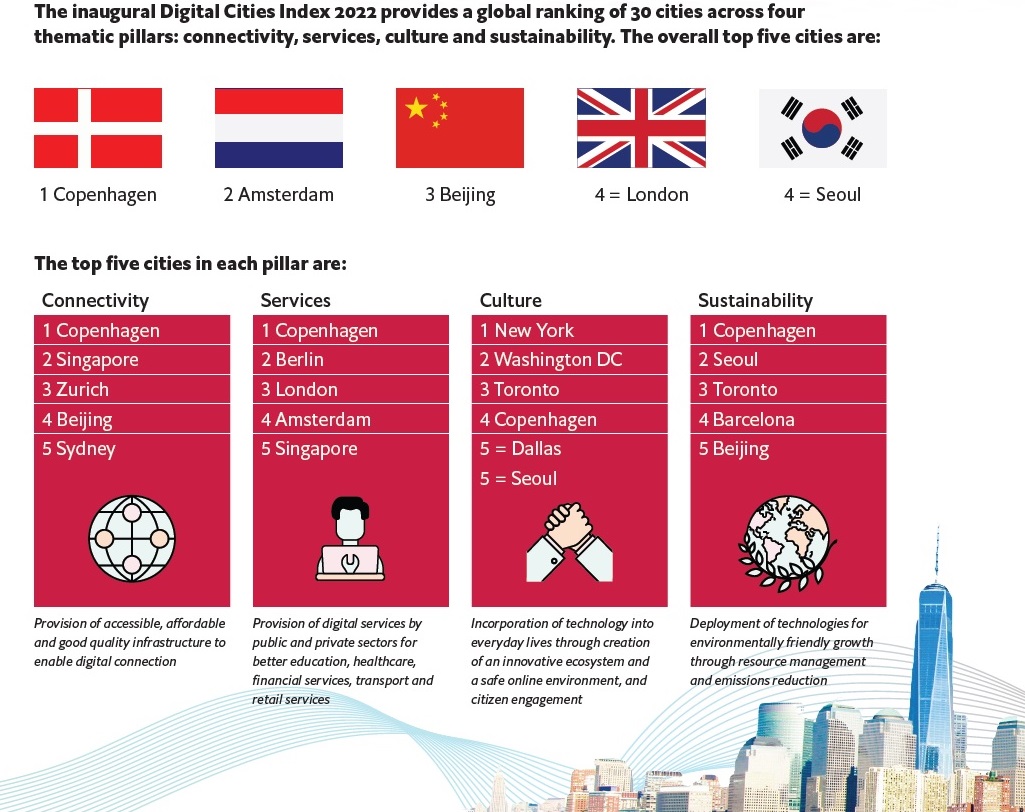Digital Cities Index
Making digital work for cities: A global benchmark for urban technology
To help urban decision-makers make the best use of digital technology, the inaugural Digital Cities Index (DCI) 2022 provides a global ranking of 30 cities across four thematic pillars: connectivity, services, culture and sustainability. Combining quantitative and qualitative analysis, and including a survey of 3,000 residents spread across all cities in the DCI, the results show how cities are performing in terms of both quantitative metrics like internet speed and qualitative factors such as the presence of strategies, policies and plans for technologies like 5G and AI. This white paper combines highlights from the DCI with expert commentary on the key factors determining success in the utilisation of digital technology in today’s cities, and uses the rankings to benchmark performance and identify the leading cities and the best practices that got them there.

Introduction: From technocracy to engagement
Over the last decade, cities across the world have built digital infrastructure and embedded digital technologies into urban services, from artificial intelligence (AI)-driven traffic management systems to smart lighting, electric mobility, and even blockchain. A suite of frontier digital capabilities – broadly, AI, the Internet of Things (IoT), cloud computing and 5G connectivity – are continually advancing in terms of quality, range of application and affordability, offering municipal authorities a powerful set of tools to make cities smarter, safer, cleaner and more inclusive. Smart cities’ spending is forecast to reach US$327 billion by 2025, from $96 billion in 2019, and 70% of spending on smart city technology by 2030 will come from the US, Western Europe and China.
Dave Hopping, CEO of Smart Infrastructure Solutions and Services at Siemens, claims that while the idea of deploying technology to cities is far from novel, with some pilots and approaches dating back to the 1970s, the benefits are becoming more tangible and scalable thanks to three factors. “One is the sense of urgency due to macro issues like climate change and population growth. Two is the cost of technology deployment coming down. Third is the ability to deploy new business models, where public and private sectors can work together to provide ‘X-as-a-service’, whether energy, security or operations. These three factors have changed the narrative.
Continue reading by downloading the whitepaper:
Explainer video





